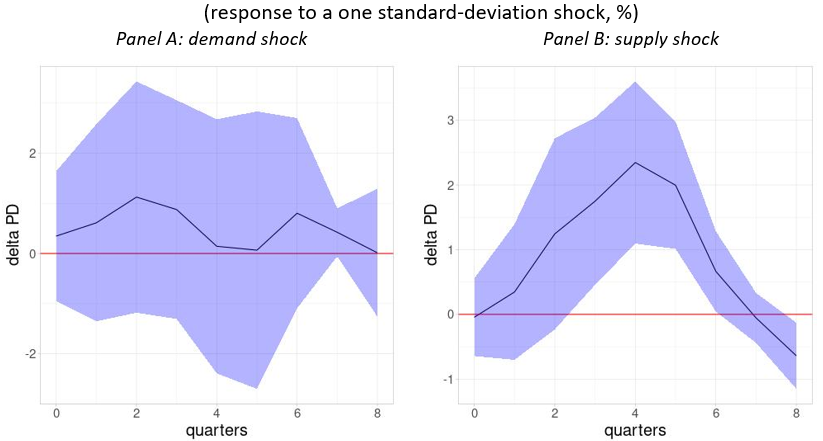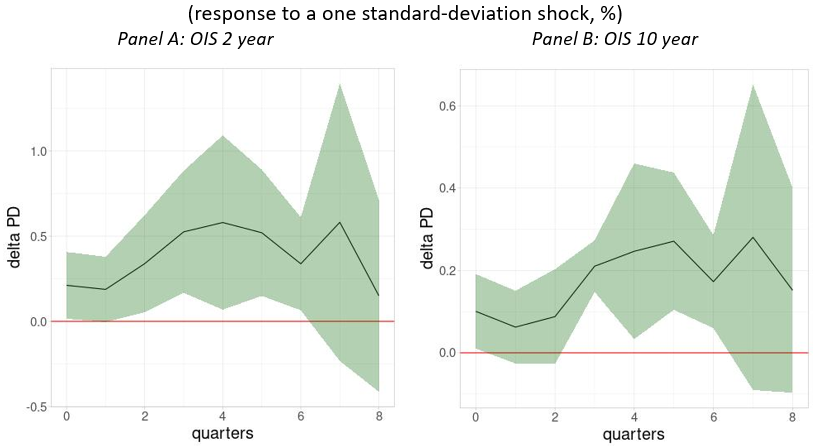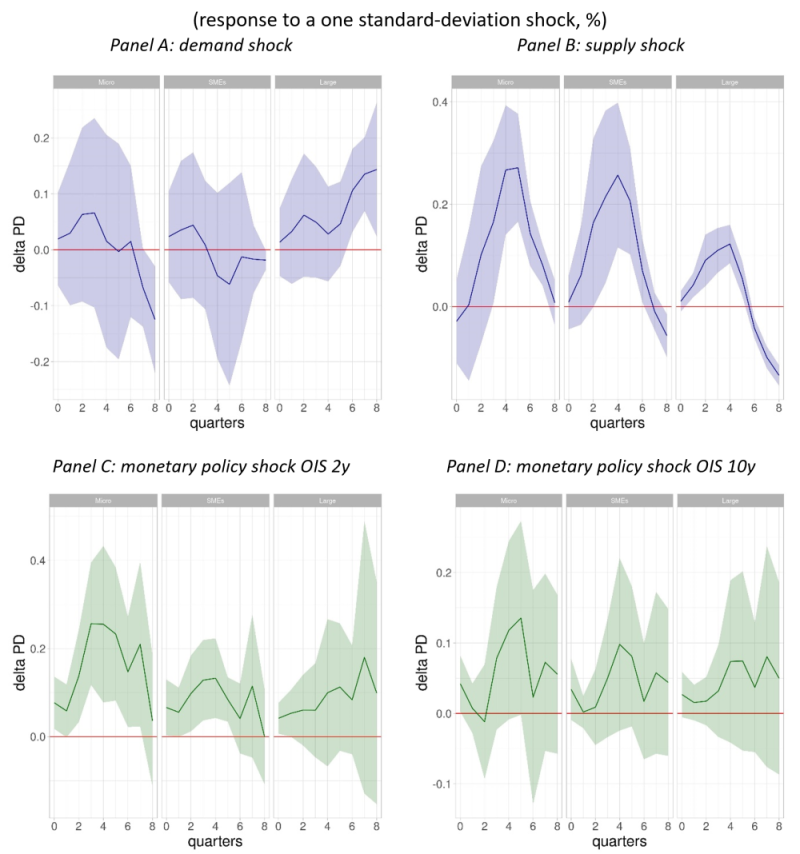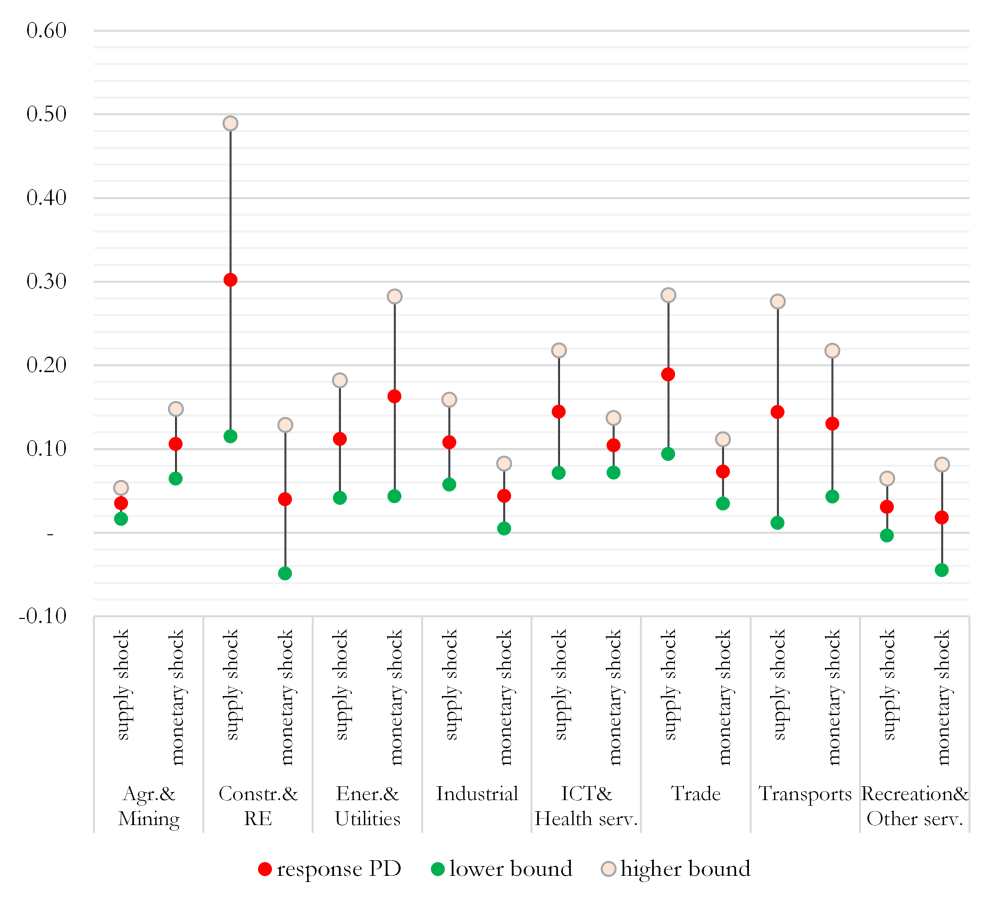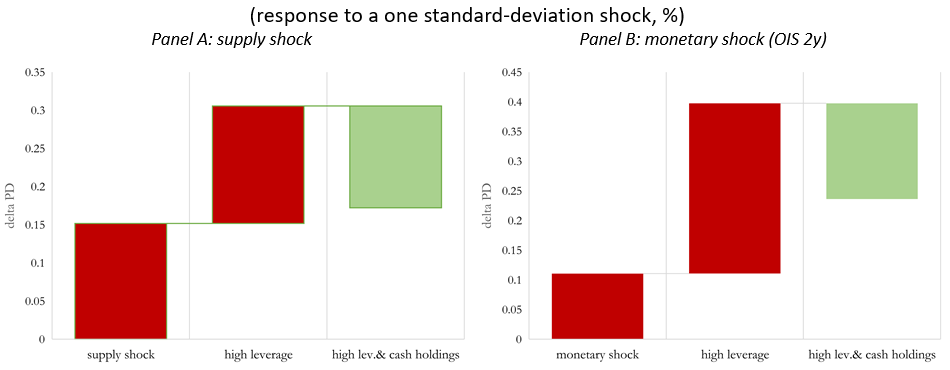References
Altavilla, C., Brugnolini, L ., Gürkaynak, R., Motto, R., and Ragusa, G., 2019. Measuring euro area monetary policy. Journal of Monetary Economics, Vol. 108, p.p. 162-179.
Gonçalves, E. and Koester, G., 2022. The role of demand and supply in underlying inflation – decomposing HICPX inflation into components. Economic Bulletin Boxes, Vol. 7, European Central Bank.
Ippolito, F., Ozdagli, A.K., Perez-Orive, A., 2018. The transmission of monetary policy through bank lending: The floating rate channel. Journal of Monetary Economics, Vol. 95, 2018, p.p. 49-71.
Jordà, Ò., 2005. Estimation and Inference of Impulse Responses by Local Projections. American Economic Review, Vol.95, No. 1, p.p. 161-182.
Pesaran, M., Schuermann, T., Treutler, BJ., and Weiner, S. M., 2006. Macroeconomic Dynamics and Credit Risk: A Global Perspective. Journal of Money, Credit and Banking, Vol. 38 (5), pp. 1211-1261.


